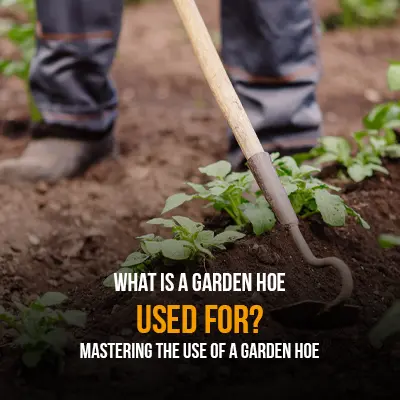
A garden hoe, an age-old instrument that has stood the test of time, proves its indispensable value in any gardener’s arsenal. But what exactly is a garden hoe used for? This comprehensive guide delves into the utility of a garden hoe, exploring its varied applications, types, and maintenance routines.
The History of the Garden Hoe
The humble garden hoe boasts a rich history. It has been with us since the dawn of agriculture, aiding farmers and gardeners alike in their toil. Today, its relevance remains unquestioned, proving its worth in modern horticulture practices.
The Different Types of Garden Hoes
Draw Hoe
The most traditional type, a draw hoe, is perfect for moving soil and removing weeds. Its perpendicular blade makes it ideal for “drawing” earth towards the user.
Dutch Hoe
Next, the Dutch hoe is designed for cutting weeds at the root level. The sharp, horizontal blade is pushed or pulled just under the soil surface, slicing through unwelcome invaders.
Scuffle Hoe
Lastly, the scuffle hoe, also known as a stirrup hoe, has a dual-edged blade that moves back and forth to sever weeds just below the surface. Its ‘stirrup’ design reduces soil disruption, making it a preferred choice for many gardeners.
Why is a Garden Hoe Important?
Weed Control
One of the primary uses of a garden hoe is weed control. By cutting weeds at their roots, hoes prevent their spread, keeping your garden looking pristine and your plants flourishing.
Soil Aeration
A garden hoe also aerates the soil, promoting healthy root development. By breaking compacted earth, it encourages water and nutrient penetration, ensuring plant health.
Shaping Soil
Whether you’re creating planting rows or mounds, a garden hoe can help shape the soil to your needs. This versatility is especially beneficial in vegetable gardens.
Clearing Pathways
Garden hoes are not limited to soil and weed management. They are equally effective in clearing garden pathways of debris and encroaching vegetation.
How to Use a Garden Hoe
Basic Hoeing Technique
Hold the handle at waist height, slightly angled. Use a chopping motion to cut into the soil or weeds. The trick is to let the tool do the work; there’s no need to apply excessive force.
Moreover, explore: How to Use a Garden Hoe
Advanced Hoeing Techniques
With practice, you can learn to slide the hoe blade just under the soil surface, cleanly severing weeds without disturbing the soil structure. This technique, often used with Dutch and scuffle hoes, is known as ‘skimming.’
Maintenance of a Garden Hoe
Proper maintenance prolongs the life of a garden hoe. Clean it after each use to prevent rust. Sharpen the blade regularly for efficient cutting. Finally, yearly handle care, such as sanding and oiling, ensures a comfortable and durable grip.
Whether you’re an avid gardener or a weekend hobbyist, a garden hoe is a versatile, essential tool. Its ability to control weeds, aerate soil, shape beds, and clear paths makes it a true workhorse in the garden. With proper use and care, a garden hoe will continue to serve you for many years.
Frequently Asked Questions
What is the best type of hoe for weeding?
The Dutch hoe and scuffle hoe are ideal for weeding as they can cut weeds at the root level.
How often should I sharpen my garden hoe?
It’s best to sharpen your hoe at the start of the gardening season and then as needed, depending on use.
How do I prevent my garden hoe from rusting?
Clean your hoe after each use, removing dirt and debris. Dry it thoroughly before storing to prevent rust.
Do I need more than one type of garden hoe?
Depending on the variety of tasks and the size of your garden, you may benefit from multiple types of hoes.
Can a garden hoe be used in heavy clay soil?
Yes, a garden hoe can be used in clay soil, but it might require more effort. Regular soil amending practices can help improve the structure of clay soil.
